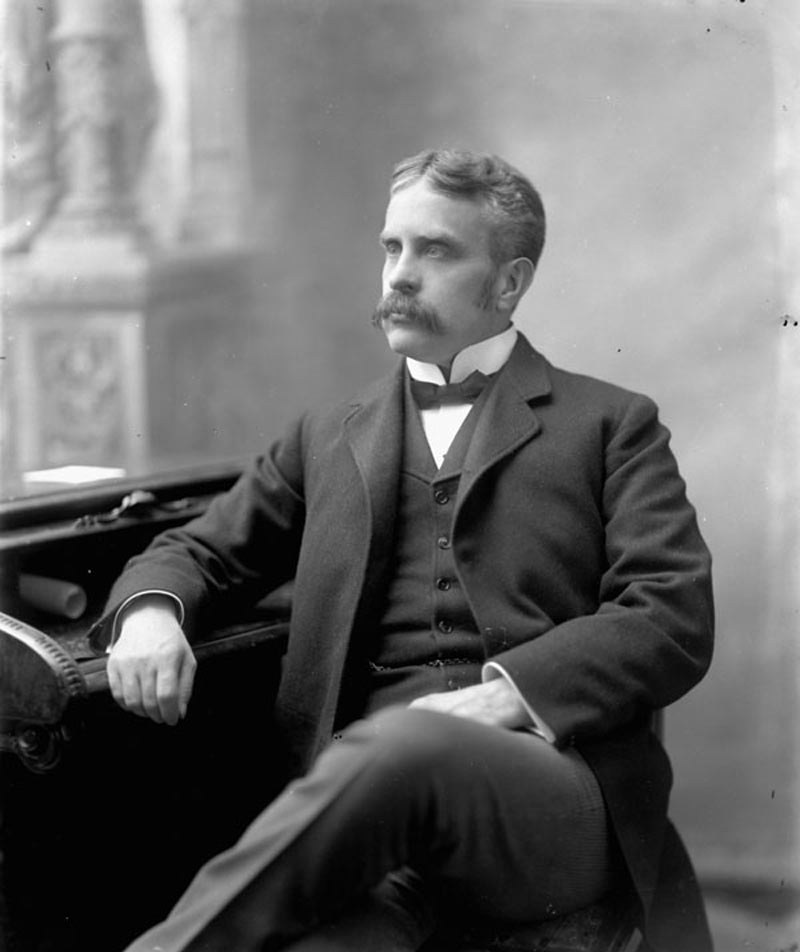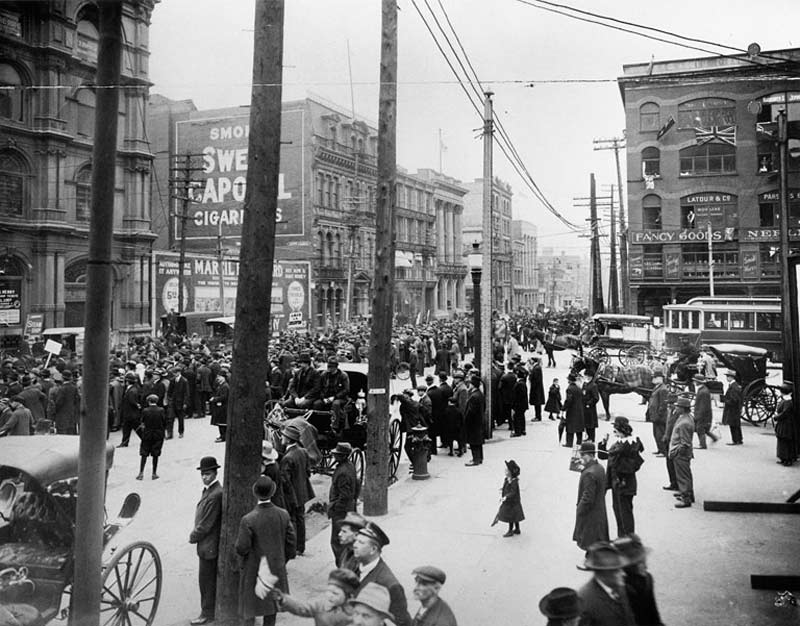On May 18, 1917, Prime Minister Robert Borden dropped a bombshell when he introduced the Military Service Act, a conscription law that would require all male citizens between the ages of 20 to 45 to enlist.
Little did Borden know just how severe the impact would be.
“Borden had implemented conscription because he believed the war had to be won and that Canada must play its full part,” J.L. Granatstein wrote in Maclean’s. “To achieve these ends, he almost broke the nation.”
When the First World War broke out in 1914, English Canadians, stoked by their own imperial passions, were the first in line at recruiting stations across the country. But that same patriotic contagion didn’t affect all groups evenly.
Unlike their English counterparts, French Canadians felt little loyalty to the British cause, still sore from Ontario’s move to ban French-language instruction in 1913.

Sir Robert Laird Borden was a Canadian lawyer and politician who served as the eighth prime minister of Canada from 1911 to 1920.[Wikipedia; LAC]
Still, in the war’s first two years, Canada saw more than 300,000 join the overseas fight. But the action in France and Belgium resulted in high casualties, leaving the Canadian Expeditionary Force depleted of men and morale. This was compounded by the fact that more and more Canadians stayed back in favour of job opportunities in their own borders.
In 1917, Borden visited France and Britain and was shocked by the 10,000 casualties, as well as the magnitude of the conflict at large. His imperial solidarity now in full force, Borden believed it was Canada’s duty to play an active role in combat and to support the British Empire—whether everyone agreed or not.
“If we do not pass this measure,” Borden told Parliament, “if we do not provide reinforcements, if we do not keep our plighted faith, with what countenance shall we meet (the soldiers) on their return?”
Borden’s change of heart didn’t come without its warnings, however, with Liberal opposition leader Wilfrid Laurier reminding Borden of the “deep cleavage amongst the Canadian people” and how a compulsory service would widen those fissures.
The following day, upon hearing of Mercier’s arrest, conscription protesters fought back, looting, smashing windows and setting the city’s Military Service Registry office ablaze.
Similarly, Montreal archbishop Paul Bruchési wrote to Borden: “Dear Sir Robert, Do you not think, in light of our population, that we have largely done our share? The people are agitated…In the province of Quebec; we can expect deplorable revolts. Will this not end in bloodshed?”
But in spite of ominous horizons, Borden had no problem passing the Military Service Act in the House of Commons on July 24, 1917, mostly due to the support of the English-speaking members of Parliament.
Massive protests began in Montreal, with store windows and tramway rails easy targets for acts of destruction. Some were wounded and one demonstrator was killed as some 150 police officers restored peace. But that would prove temporary.

Anti-conscription parade at Victoria Square, Montreal, Quebec, Canada. Opposition to conscription in Canada was widespread (including farmers, employers, recent immigrants), but open opposition was left to French-speakers, primarily in Quebec.[Wikipedia; LAC]
The following day, upon hearing of Mercier’s arrest, conscription protesters fought back, looting, smashing windows and setting the city’s Military Service Registry office ablaze. Registrar documents could be found scattered in the snow among rioters crying out against imperialism.
And even when Mercier was released, it wasn’t enough to stop the turmoil.
The result: four dead and many injured.
The riots became ravenous, and by March 30, the commanding officer of the district called in 1,000 troops to help control the crowd—this in addition to the 890 already there. In anticipation of the growing number of soldiers, Quebecers broke into hardware stores to arm their makeshift militia.
The demonstration got worse still on April 1. As newly added officers began moving into the city, rioters went on the defensive, bombarding the troops with ice, rocks, bricks and anything else they could find.
After armed civilians fired at the officers, the soldiers finally fought back with rifles and machine guns. The result: four dead and many injured.
Soldier Frank Scott, who was on leave in the area during that time, noted: “Rioters had put out the street lamps; the Lower City was shrouded in mist and darkness that night. Suddenly, I could make out the fire of several heavy machine guns. It was deafening and gave the impression that a massacre was taking place at the foot of the cliff.”
Officers managed to restore order, in what would later be called the “Easter Riots”, by 1 a.m.
The Military Service Act would conscript 47,509 men, 24,132 serving in France. The law had its drawbacks, of course, with thousands of evasions and exceptions recorded.
But even though the armistice would follow in a matter of months, those conscripts proved important to the Canadian Corps.
“From Aug. 8 through to the Armistice, the Canadians fought their most important and most costly battles of the war,” wrote Granatstein.
During that period, casualty numbers were exorbitant. Almost 20 per cent of Canada’s total war casualties occurred in those 100 days.
“The conscripts, however reluctant they may have been to serve,” Granatstein noted, “nonetheless played a critical role in winning the war.”
Advertisement



















